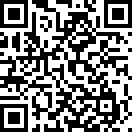EBSeq: An R package for RNA-Seq Differential Expression Analysis
Ning Leng,
John A Dawson and
Christina Kendziorski
University of Wisconsin Madison
Contact email: nleng@wisc.edu, kendzior@biostat.wisc.edu
R/EBSeq is an R package for identifying genes and isoforms differentially expressed (DE)
across two or more biological conditions in an RNA-seq experiment.
Details can be found in Leng et al., 2013. The R/EBSeq package may be downloaded below.
A vignette is also available there. It provides the syntax required for identifying DE genes and isoforms in a two-group RNA-seq experiment as well
for identifying DE genes across more than two conditions (as noted in the vignette, the commands
for identifying DE isoforms across more than two conditions are the same as those required for gene-level analysis).
Installation
EBSeq is currently available at Bioconductor
(EBSeq Bioconductor page).
To install, type the following commands in R:
source("http://bioconductor.org/biocLite.R")
devel = "http://bioconductor.org/packages/3.2/bioc"
biocLite("EBSeq", siteRepos = devel, type="source")
library(EBSeq)
packageVersion("EBSeq")
Vignette
EBSeq User Interface

EBSeq Galaxy toolshed

RSEM-EBSeq pipeline
EBSeq is now coupled with RSEM (Li et al. 2010) so that RSEM may be used
to quantify expression, and EBSeq may follow to identify DE genes and isoforms.
For more details, see
RSEM-EBSeq pipeline.
References
Leng, N., J.A. Dawson, J.A. Thomson, V. Ruotti, A.I. Rissman, B.M.G. Smits, J.D. Haag, M.N. Gould, R.M. Stewart, and C. Kendziorski.
EBSeq: An empirical Bayes hierarchical model for inference in RNA-seq experiments, Bioinformatics, 2013.
Paper
Li, B., V. Ruotti, R.M. Stewart, J.A. Thomson, and C. Dewey. RNA-Seq gene expression estimation
with read mapping uncertainty. Bioinformatics 26(4): 493-500, 2010.
Share this page:



